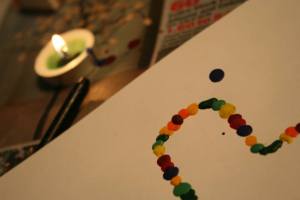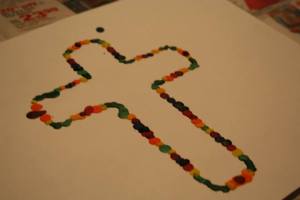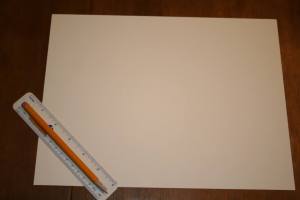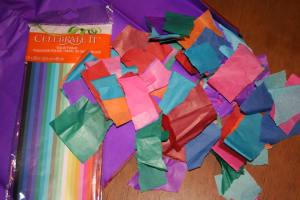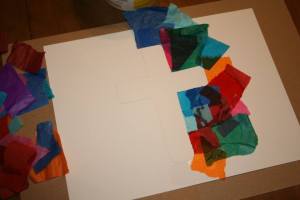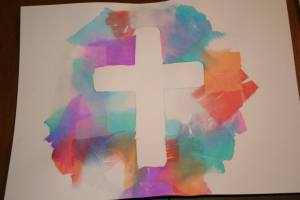For those of us Orthodox Christians who follow the new calendar, the feast of the Nativity is upon us! For those of us following the old calendar, it is rapidly approaching. For all of us, this is a season of celebrating Christ’s humble condescension to earth for us and for our salvation. It is truly a time for celebration! And what a joy to be able to celebrate Christmas not just for one day, but for all of the twelve days of Christmas! Are you looking for ideas for your family’s celebration? Celebrating the Twelve Days of Christmas: A Family Devotional in the Eastern Orthodox Tradition, by AmandaEve Wigglesworth, offers a variety of ideas for families to do together in the context of a family devotional time.
“After forty days of fasting and preparing for Christmas, we now begin the season of feasting! …There is a popular Christmas song called ‘The Twelve Days of Christmas’ in which a suitor gives presents each day to his true love. This song was written during a time when people would exchange one small gift a day throughout all twelve days… While the song is usually seen as a nonsense song, we can also use it to remind ourselves of the gifts God gives us… It is always good to be reminded of God in everything around us, so in each devotional, we will look at the Christian meanings given to the gifts in this popular song.” (p.9) The next few pages of the book go on to offer ideas of activities to do together throughout the season.
The bulk of the rest of the book walks the reader through each of the twelve days of Christmas, offering a short meditation on what is happening in our Orthodox Christian Faith on that particular day. Each meditation contains information about the feast or saint being commemorated that day; a related kontakion or troparion; and a short explanation of the Christian meanings behind both the number of the day as well as the gift offered in the song on that day of Christmas. Each day there is also a suggested related activity to do together as a family. Activities vary from Christmas caroling to making thank-you cards to crafts (ie: making a St. Genevieve’s luminaria and coloring a “stained glass” icon) to baking vasilopita (recipe included) to cleaning your house to prepare for your house blessing. The book concludes with appendices such as recipes, craft directions, and a craft pattern.
Families who are interested in learning more about their faith will do well to consider adding this book to their family library. The ideas and meditations in the book are a wonderful resource. Readers may only want to read through the book together as a family one time. Or, it could happen that the ideas in this book become the basis on which to begin a variety of family traditions related to the twelve days of Christmas.
Regardless, the reader is sure to agree with the back cover of the book: “With hymns, stories, meditations, and activities for each day as well as suggestions for the whole season, Celebrating the Twelve Days of Christmas provides an invaluable resource for families looking to restore this season to its rightful place in their lives.”
Christ is born! Glorify Him! May we indeed celebrate the twelve days of Christmas in reverence and joy!
Find more information about the book, including sample pages, here: http://store.ancientfaith.com/celebrating-the-twelve-days-of-christmas/
***
Following are blogs and articles related to the Orthodox Christian celebration of the twelve days of Christmas.
***
“The 12 Days of Christmas begins on December 25 as day 1, then extends for 11 more days to end on January 5. Some traditions begin counting day 1 of the 12 days on December 26 which would end the period on January 6. Recently, we find some civil traditions celebrating the 12 days of Christmas 12 days BEFORE Christmas, but that is a new invention which some attribute to the merchants who want to increase sales for the season.” ~ from http://orthodoxtoday.wordpress.com/2014/12/15/the-date-of-christmas-the-12-days-of-christmas-and-the-orthodox-christian-traditions/
***
“At Pascha, we all know that we greet one another by saying ‘Christ is risen!’ and responding ‘Truly He is risen!’ for 40 days. Did you know that there is a similar greeting for Christmas? We should greet everyone after the Divine Liturgy on the Nativity by proclaiming ‘Christ is born!’ The response is ‘Glorify Him!’ Continue using this greeting the entire 12 days of Christmas. Add the beautiful Katavasia of the Nativity, which this greeting comes from, to your family prayer during this period:
Christ is born! Glorify Him!
Christ comes from heaven; meet Him.
Christ is on earth exalt Him.
O you earth, sing to the Lord.
O your nations, praise Him in joy for He has been glorified.” ~ from http://www.antiochian.org/content/let%E2%80%99s-celebrate-12-days-christmas
***
“I like the idea of Christmas starting instead of ending on December 25th. We usually don’t celebrate our own birthdays until the day they occur or later. So why do we, in effect, celebrate Jesus Christ’s birthday (Nativity) so long in advance?” ~ from http://www.stlukeorthodox.com/html/evangelist/2001/twelvedays.cfm
***
“The birth of Christ and His baptism ought never to be divorced. Both events define the Christmas season. It imparts to the Christian the knowledge that Christ’s coming into the world and Christ’s sanctification of the waters makes our new life possible — a sonship by adoption accomplished through baptism.” ~ from http://www.antiochian.org/node/18656
***
“We must share this light with the darkness of the world, working together with the Spirit of God in the redemption of creation through Christ our Lord. This Lord entered our world in the humility of a child born to die—being wrapped as an infant in burial cloths, as depicted in the Nativity icon—by his own death triumphed over death itself.
Ultimately, then, the meaning of both the Nativity of Christ and the entirety of the 12 Days of Christmas is the receiving and giving of Christ, who is truly the gift and the giver, the one who is received and distributed.” ~ from http://www.pravoslavie.ru/english/67338.htm






